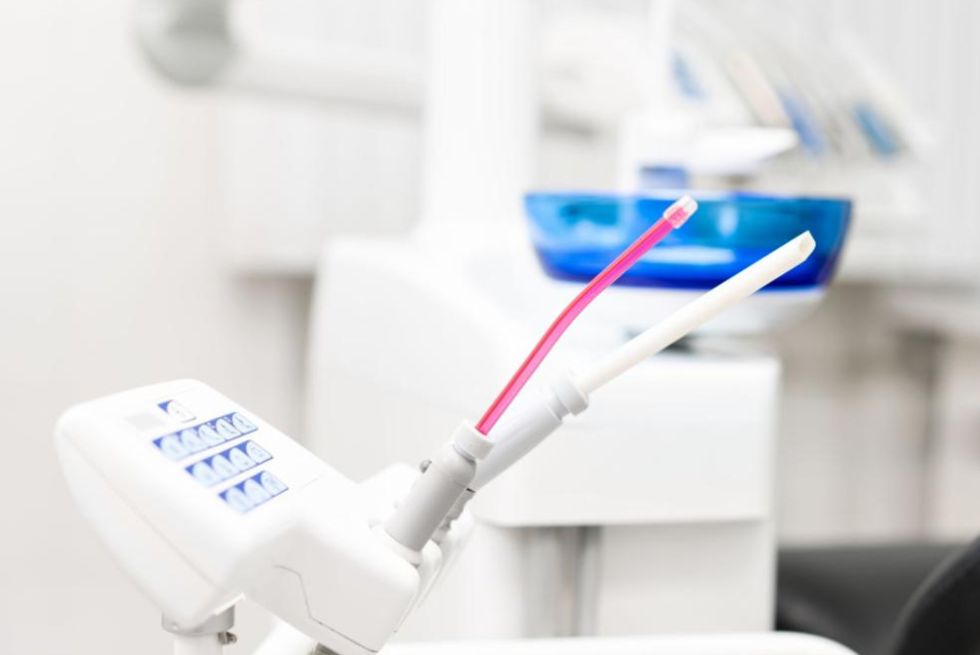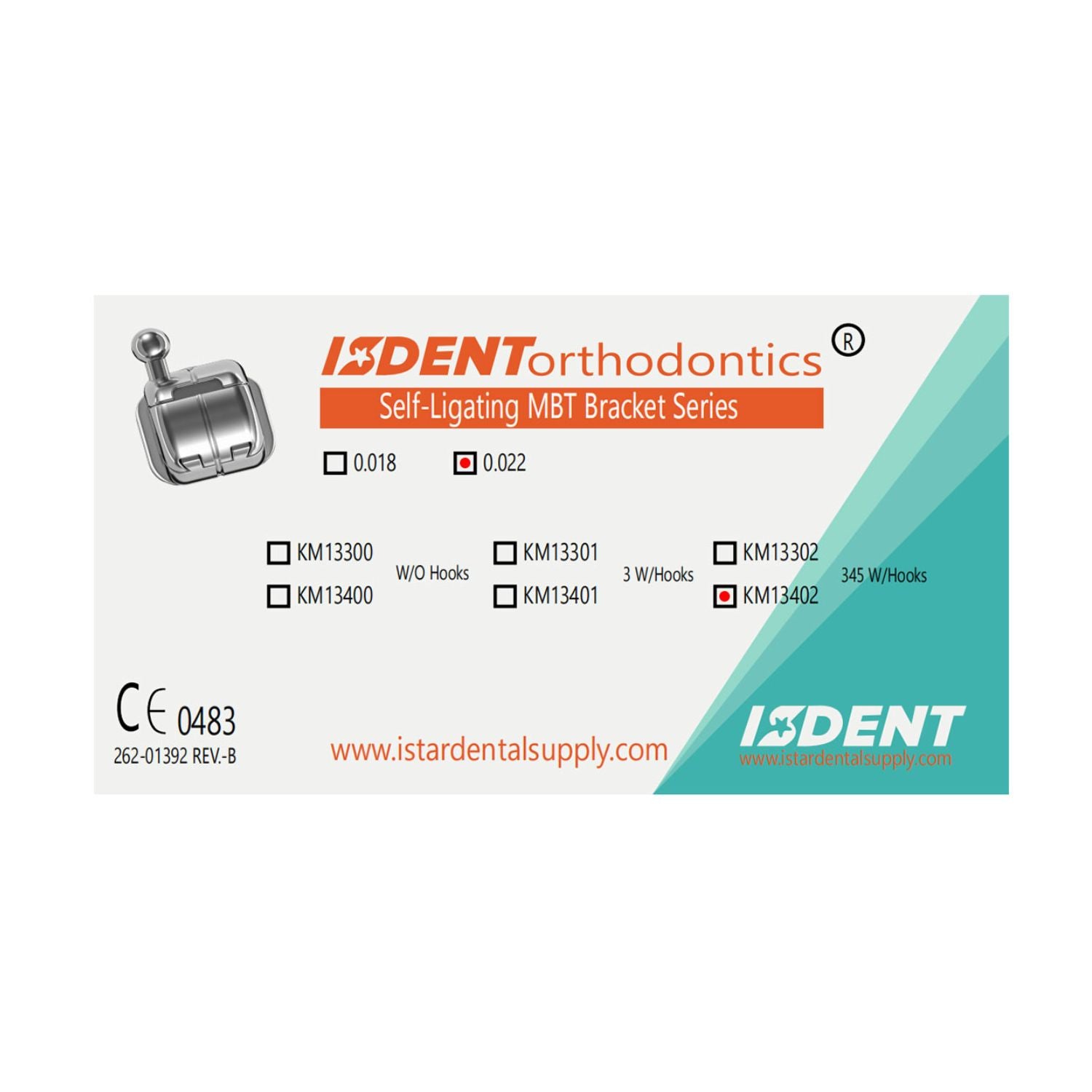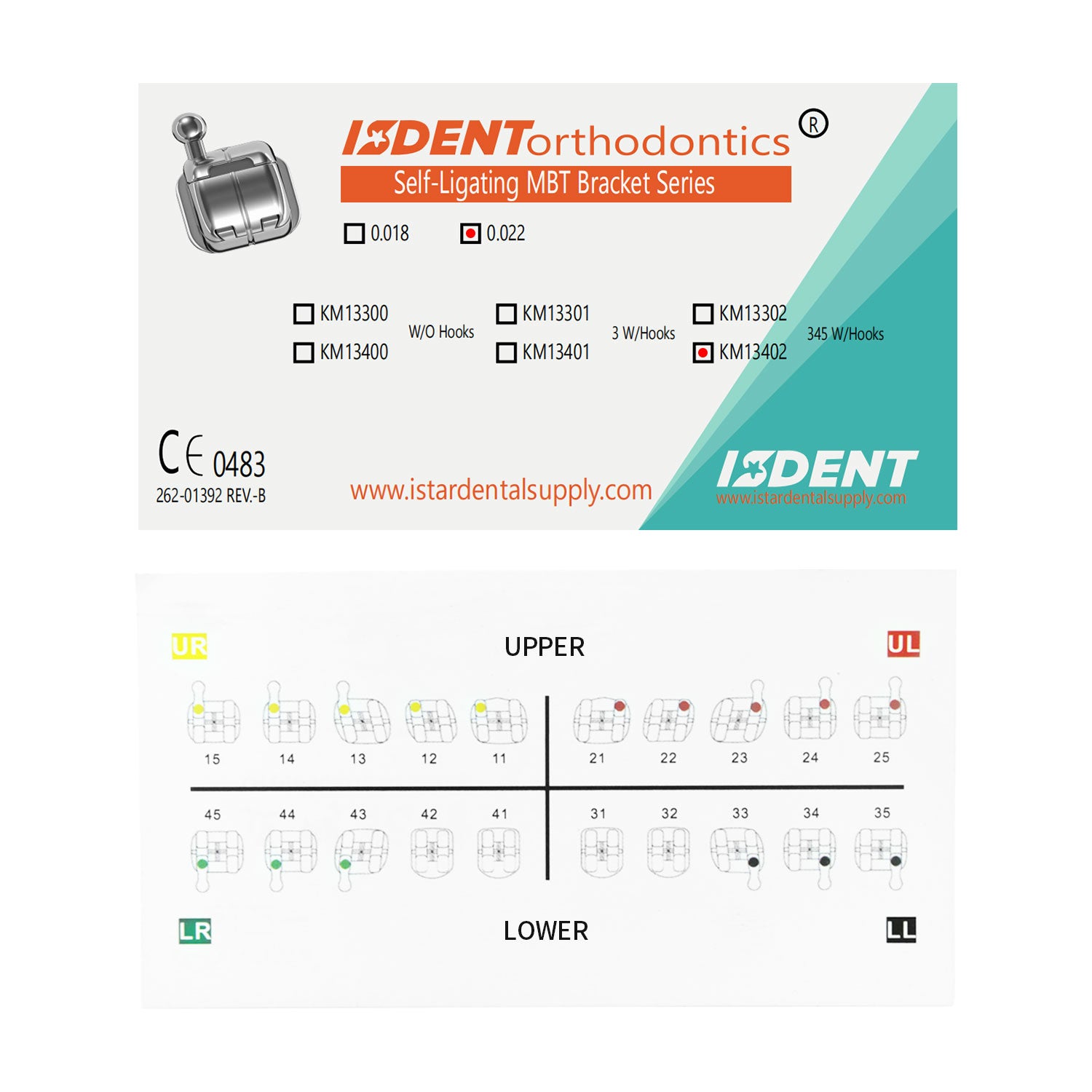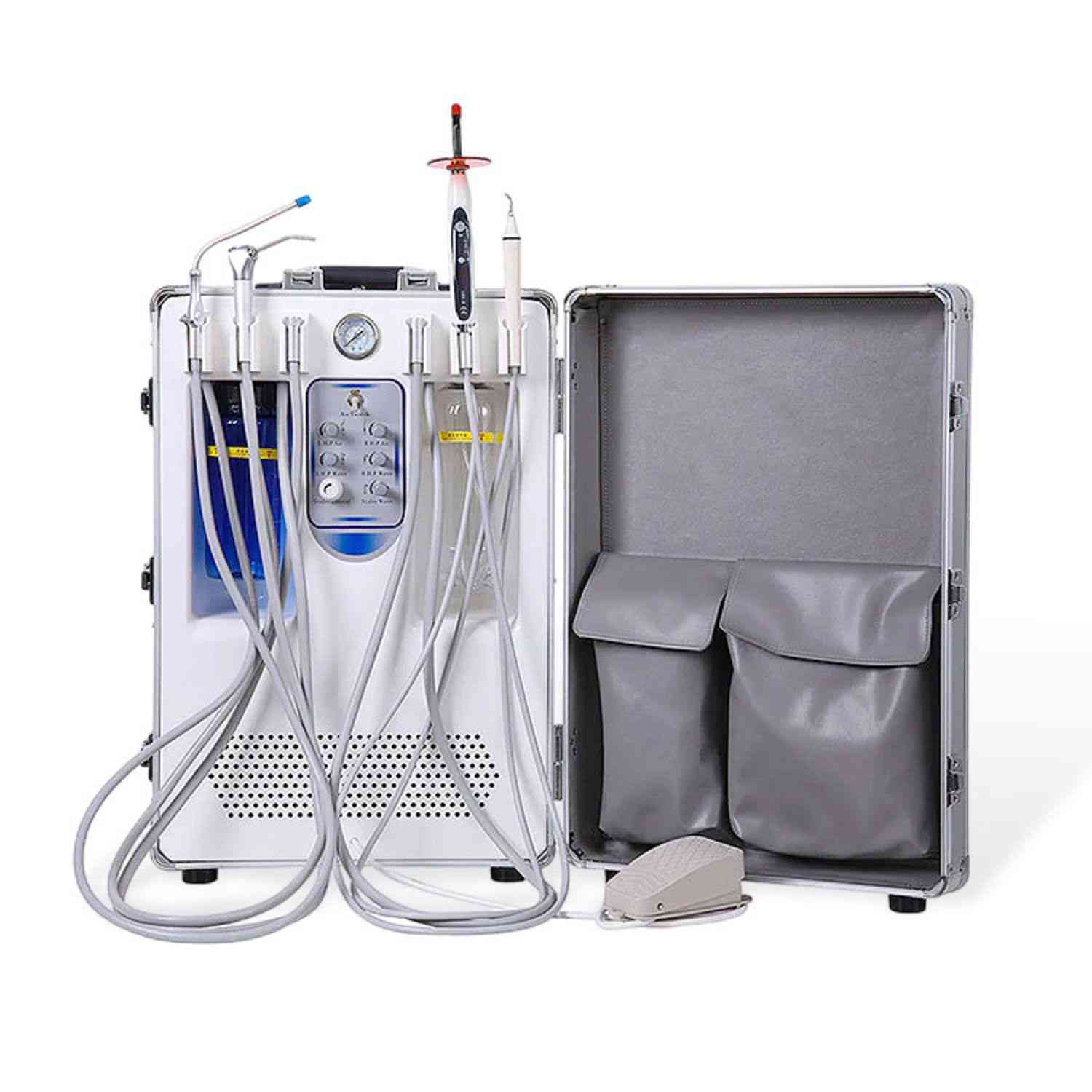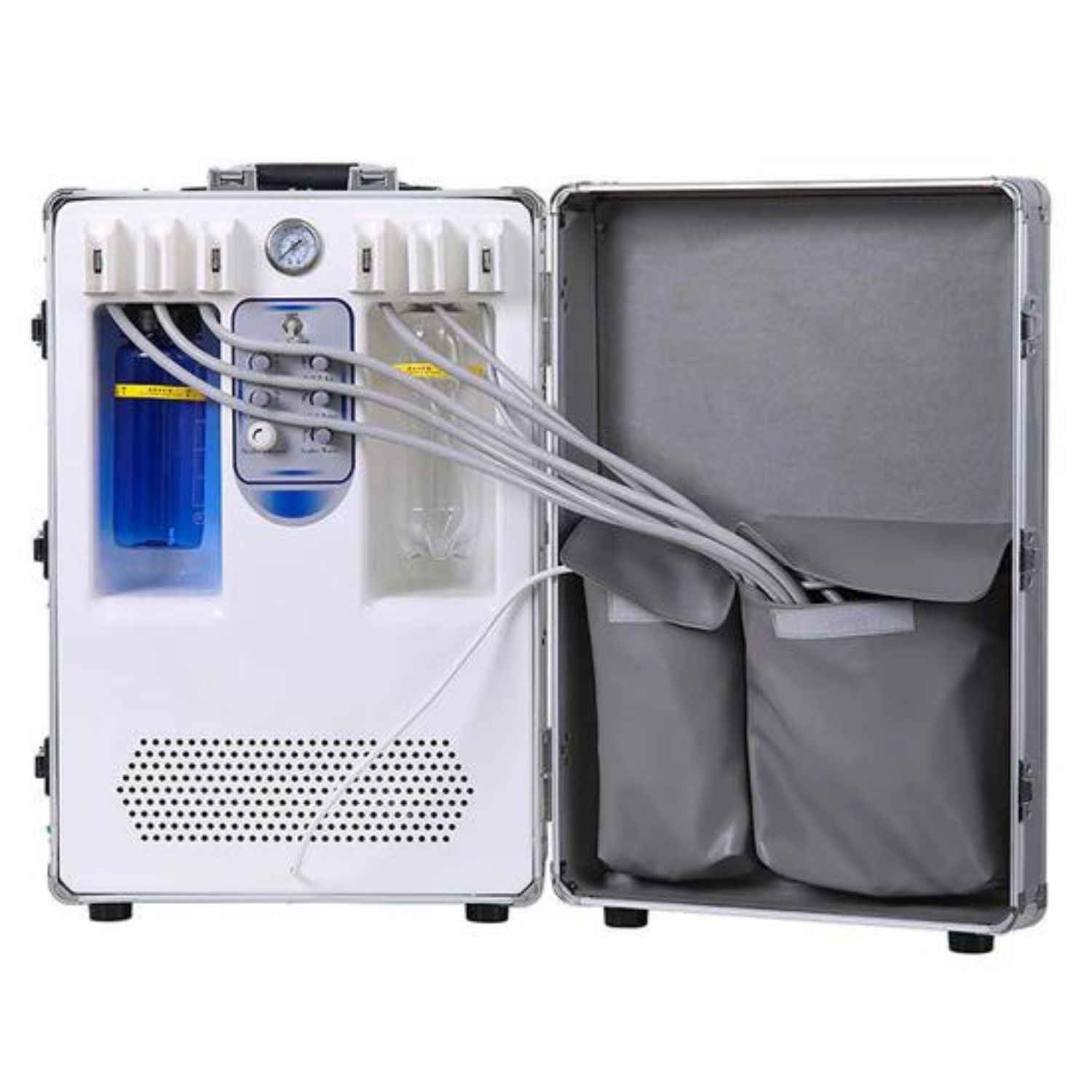Troubleshooting Your Dental Chair Suction: A Comprehensive Guide to Keep Your Unit Running Smoothly
This article provides a comprehensive guide to troubleshooting common issues with dental chair suction systems. Whether you're a dentist, part of a dental clinic, dental lab, dental hospital, or dental school, understanding how to diagnose and resolve suction failure is essential for maintaining a smooth and efficient practice. This in-depth guide will equip you with the knowledge to identify problems, implement quick fixes, and know when to call for professional service, ultimately saving you time and ensuring patient comfort.

Why is My Dental Chair Suction Not Working?
A malfunctioning dental suction system can significantly disrupt your workflow and compromise patient care. As ISTAR Dental Supply, we understand the frustration caused by sudden equipment failures. A few initial questions you may have include: is it a simple blockage, a problem with the pump, or a more complex system issue? Identifying the root cause is the first step in effective troubleshooting. There might be a loss of pressure, making procedures more difficult, or the suction may have stopped working entirely. Understanding the potential reasons will make you handle the problems.
Before you proceed with this section of the article, make sure to explore ISTAR Dental Suction, and get to know our products.
How Do I Check the Dental Suction Pressure Gauge?
The pressure gauge is your first point of reference when diagnosing suction problems. Begin by ensuring the dental chair is turned on and the suction system is activated. Observe the gauge:
- Normal Reading: A healthy system typically shows a consistent vacuum level within the manufacturer's recommended range.
- Low Reading: Indicates a weak vacuum, potentially due to leaks, blockages, or a failing pump.
- No Reading: Suggests a complete loss of power, a major blockage, or a significant system failure.
- Fluctuating Reading: This can point to intermittent blockages or a problem with the pump's regulator.
What are the Common Causes of Dental Suction Failure?
Several factors can contribute to suction failure. Here are some of the most common causes faced by dental professionals:
- Blockages: Debris, solidified materials, or even small instruments can block the suction lines, hoses, or the filter. Check for blockages throughout the system.
- Leaks: Cracks or loose connections in the tubing or at the unit itself can cause a loss of vacuum pressure.
- Filter Issues: A clogged or dirty filter restricts airflow and reduces suction power. This includes the main filter and the water filter in some systems.
- Pump Problems: The vacuum pump is the heart of the system. If it's failing, worn out, or has an electrical fault, suction will be weak or non-existent.
- Water System Problems: Problems with wet ring water system can lead to decresed performance.
How to Inspect the Dental Suction Filter and Water Filter?
Regularly inspecting and cleaning the filter is crucial for maintaining optimal suction. First, disconnect power to the unit for saftey. Here's how:
- Locate the Filter: The filter is usually housed in a canister near the suction unit or within the dental chair itself. Refer to your equipment manual for the exact location.
- Remove the Filter: Carefully remove the filter, taking note of its orientation for reinstallation.
- Inspect and Clean: Check the filter for any debris or clog. Rinse it thoroughly with water (if it's a reusable filter) or replace it with a new one (if it's disposable). Use proper cleaner designed for dental use.
- Water Filter (if applicable): If your system has a water filter, follow the same steps to inspect and clean or replace it. Water pressure problems can also impact suction.
Troubleshooting Steps for Dental Suction Blockage?
If you suspect a blockage, follow these troubleshooting steps:
- Check the Obvious: Start with the easiest-to-access points. Inspect the suction tip, the saliva ejector, and the HVE hose for any visible obstructions.
- Flush the Lines: Disconnect the suction lines at various points and try flushing them with water. This can help dislodge minor blockages. Be careful not to introduce water into the pump itself.
- Use a Suction Line Cleaner: A specialized dental suction line cleaner can help dissolve solidified materials and debris. Follow the manufacturer's instructions carefully.
- Drain line check: Be sure drain is not blocked.

How Can Regular Maintenance Prevent Dental Suction Problems?
Regular maintenance is key to preventing suction issues and extending the life of your equipment. Here are some essential maintenance tips:
- Daily Cleaning: Flush the suction lines with a cleaning solution at the end of each day to prevent the buildup of debris.
- Weekly Filter Check: Inspect and clean or replace the filter at least once a week, or more frequently in high-volume practices.
- Monthly System Check: Conduct a thorough inspection of the entire system, checking for leaks, loose connections, and any signs of wear and tear.
- Annual Professional Service: Schedule a yearly service with a qualified technician to inspect the pump, motor, and other critical components.
When Should I Call a Professional for Dental Suction Repair?
While many problems can be resolved with basic troubleshooting, some situations require the expertise of a professional technician. Call for service if:
- You cannot identify the cause of the problem.
- The suction remains weak or absent after performing the troubleshooting steps.
- You notice any unusual noises coming from the pump or motor.
- You suspect a major component failure.
- Your equipment is under warranty, and attempting repairs yourself could void it.
The Importance of a Reliable Dental Suction System
A reliable suction is essential for efficient and safe dental procedures. It ensures:
- Patient Comfort: A strong vacuum removes saliva, blood, and debris, keeping the oral cavity clear and comfortable for the patient.
- Optimal Visibility: A clear field of vision is crucial for maintaining accurate and precise dental work.
- Infection Control: Proper suction helps remove aerosols and reduces the risk of cross-contamination.
- Equipment Longevity: Regular maintenance and prompt repair of minor issues can significantly extend the life of your dental equipment.
What are some quick solution for temporary fix
If all troubleshooting failes, and problem not identified. It could be useful to have seperate backup Portable Dental Suction Unit, so next appointment is not interupted.
ISTAR Dental Supply: Your Partner in Dental Suction Solutions
At ISTAR Dental Supply, we are more than just suction manufacturing plants. We are your partners in ensuring the smooth operation of your dental practice. We design and manufacture high-quality suction systems and components, focusing on reliability, performance, and ease of maintenance.
As manufacturers, we have an in-depth understanding of the challenges faced by dental practitioners. This knowledge allows us to provide expert advice and support, helping you choose the right suction solutions for your needs and troubleshoot any issues you may encounter.
We believe in building long-term relationships with our customers, offering not just products but also ongoing service and support. We're committed to helping you maintain a successful and efficient practice.
We offer a range of dental products, to learn more be sure to look at Dental Equipment.
FAQs
-
What should I do if my dental suction suddenly stops working?
First, check the power supply and ensure the unit is turned on. Then, inspect the suction tip, hoses, and filter for any obvious blockages. If you can't find the problem, contact a professional technician.
-
How often should I clean my dental suction lines?
You should flush the suction lines with a cleaning solution at the end of each day to prevent the buildup of debris.
-
Can I use any type of cleaner for my dental suction system?
No, it's important to use a cleaner specifically designed for dental suction systems. Other cleaners may damage the equipment or leave harmful residues.
-
My suction is weak, but there are no visible blockages. What could be the problem?
This could be due to a leak in the system, a failing pump, or a clogged filter. Check all connections and the filter, and if the problem persists, consult a technician.
- How can I prevent my dental suction from clogging? Make sure to use a Dental Compressor Regular flushing of the lines with a cleaning solution, proper disposal of materials, and avoiding the suction of large debris can help prevent clogs.
-
What is the typical lifespan of a dental suction pump?
With proper maintenance, a dental suction pump can last for many years. However, the lifespan can vary depending on the usage, the quality of the pump, and the maintenance schedule.
Conclusion: Key Takeaways
- Regular maintenance is crucial for maintaining a reliable dental suction system.
- Troubleshooting involves checking the pressure gauge, inspecting for blockages and leaks, and cleaning or replacing the filter.
- Promptly addressing minor issues can prevent more significant problems and extend the life of your equipment.
- Don't hesitate to call a professional technician if you're unable to resolve the issue yourself.
- ISTAR Dental Supply is your trusted partner for high-quality dental suction solutions and expert support.
We hope this guide has provided you with valuable insights into troubleshooting your dental chair suction system. Remember, a well-maintained suction system is essential for a smooth, efficient, and safe dental practice. If you have any further questions or need assistance, please don't hesitate to contact us at ISTAR Dental Supply. We're here to help! For any information regardin Orthodontics contact us.

